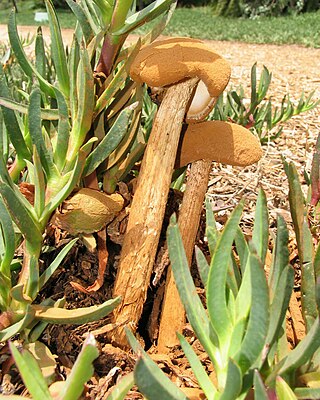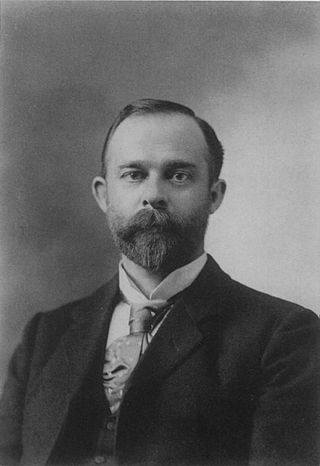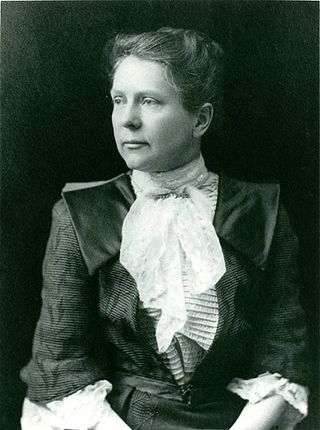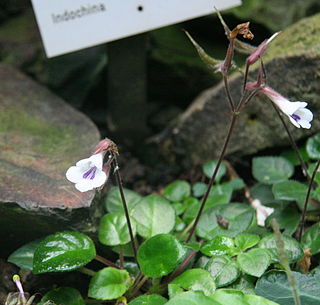Family is one of the eight major hierarchical taxonomic ranks in Linnaean taxonomy. It is classified between order and genus. A family may be divided into subfamilies, which are intermediate ranks between the ranks of family and genus. The official family names are Latin in origin; however, popular names are often used: for example, walnut trees and hickory trees belong to the family Juglandaceae, but that family is commonly referred to as the "walnut family".

John Torrey was an American botanist, chemist, and physician. Throughout much of his career, he was a teacher of chemistry, often at multiple universities, while he also pursued botanical work, focusing on the flora of North America. His most renowned works include studies of the New York flora, the Mexican Boundary, the Pacific railroad surveys, and the uncompleted Flora of North America.

Gesneriaceae, the gesneriad family, is a family of flowering plants consisting of about 152 genera and ca. 3,540 species in the tropics and subtropics of the Old World and the New World, with a very small number extending to temperate areas. Many species have colorful and showy flowers and are cultivated as ornamental plants.

The Polyporaceae are a family of poroid fungi belonging to the Basidiomycota. The flesh of their fruit bodies varies from soft to very tough. Most members of this family have their hymenium in vertical pores on the underside of the caps, but some of them have gills or gill-like structures. Many species are brackets, but others have a definite stipe – for example, Polyporus badius.
Hans Joachim Wiehler was a German botanist who specialized in the plant family Gesneriaceae. In 1954 he received a Bachelor of Arts degree from Goshen College in Goshen, Indiana and a Bachelor of Divinity degree from Goshen Biblical Seminary in 1956. He married in 1958 and remained in the United States for the rest of his life. He obtained a master's degree in botany from Cornell University and in 1979 a PhD in Botany from the University of Miami. Wiehler was on the staff of the Marie Selby Botanical Gardens from 1973 until 1982, when he left Selby to found the Gesneriad Research Foundation in Sarasota, Florida.
Austropeucedanum is a monotypic genus of flowering plants in the family Apiaceae. Its only species is Austropeucedanum oreopansil. It is endemic to Argentina.

Oxytheca is a genus of plants in the family Polygonaceae with seven species found in dry and temperate parts of the Americas. The taxonomy of this genus is in flux, with some species often listed under tentative new names.

Porodaedalea is a genus of fungi in the family Hymenochaetaceae. The genus was circumscribed by American mycologist William Alphonso Murrill in 1905.

Battarrea is a genus of mushroom-producing fungi. The genus used to be classified in the family Tulostomaceae until molecular phylogenetics revealed its affinity to the Agaricaceae. Species of Battarrea have a peridium that rests atop an elongated, hollow stipe with a surface that tends to become torn into fibrous scales. Inside the peridium, the gleba consists of spherical, warted spores, and a capillitium of simple or branched hyphal threads that have spiral or angular thickenings. The genus is named after Italian priest and naturalist Giovanni Antonio Battarra.

Pycnoporellus is a genus of fungi in the family Fomitopsidaceae. The widespread genus, circumscribed by American mycologist William Alphonso Murrill in 1905, contains two species.

Lucien Marcus Underwood was an American botanist and mycologist of the 19th and early 20th centuries.

Rhytidophyllum exsertum is a species of plant in the family Gesneriaceae, native to Cuba.

Elizabeth Gertrude Britton was an American botanist, bryologist, and educator. She and her husband, Nathaniel Lord Britton, played a significant role in the fundraising and creation of the New York Botanical Garden. She was a co-founder of the precursor body to the American Bryological and Lichenological Society. She was an activist for the protection of wildflowers, inspiring local chapter activities and the passage of legislation. Elizabeth Britton made major contributions to the literature of mosses, publishing 170 papers in that field.

Edwin Butterworth Mains (1890–1968) was an American mycologist. He was known for his taxonomic research on the rust fungi (Pucciniomycetes), the genus Cordyceps, and the earth tongues (Geoglossaceae).

Anna Murray Vail was an American botanist and the first librarian of the New York Botanical Garden. She was a student and collaborator of botanist and geologist Nathaniel Lord Britton, with whom she helped to found the New York Botanical Garden.

Deinostigma eberhardtii is a species of flowering plant in the family Gesneriaceae native to Vietnam.
Willard Webster Eggleston was an American botanist, employed by the United States Department of Agriculture Bureau of Plant Industry. He graduated from Dartmouth College in 1891 with a Bachelor of Science degree. In his work on the taxonomy of Crataegus, now known to be complicated by apomixis, polyploidy, and hybridization, he aimed to simplify, counteracting the proliferation of species names that other botanists had produced.
Chellapilla Venkata Rao (1910–1971) was an Indian botanist.

The Gesnerioideae are a subfamily of plants in the family Gesneriaceae: based on the type genus Gesneria. Although genera typically originate in the New World, some species have become widely distributed as ornamental plants.

George Newton Best was an American bryologist, expert on moss taxonomy, and second president of the Sullivant Moss Society.















